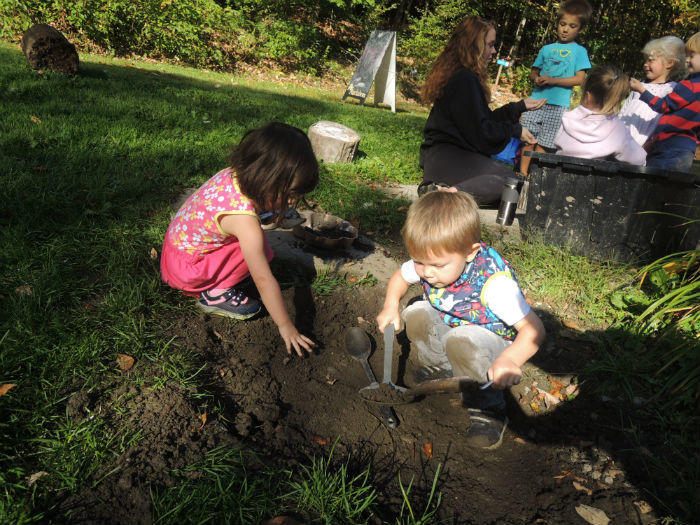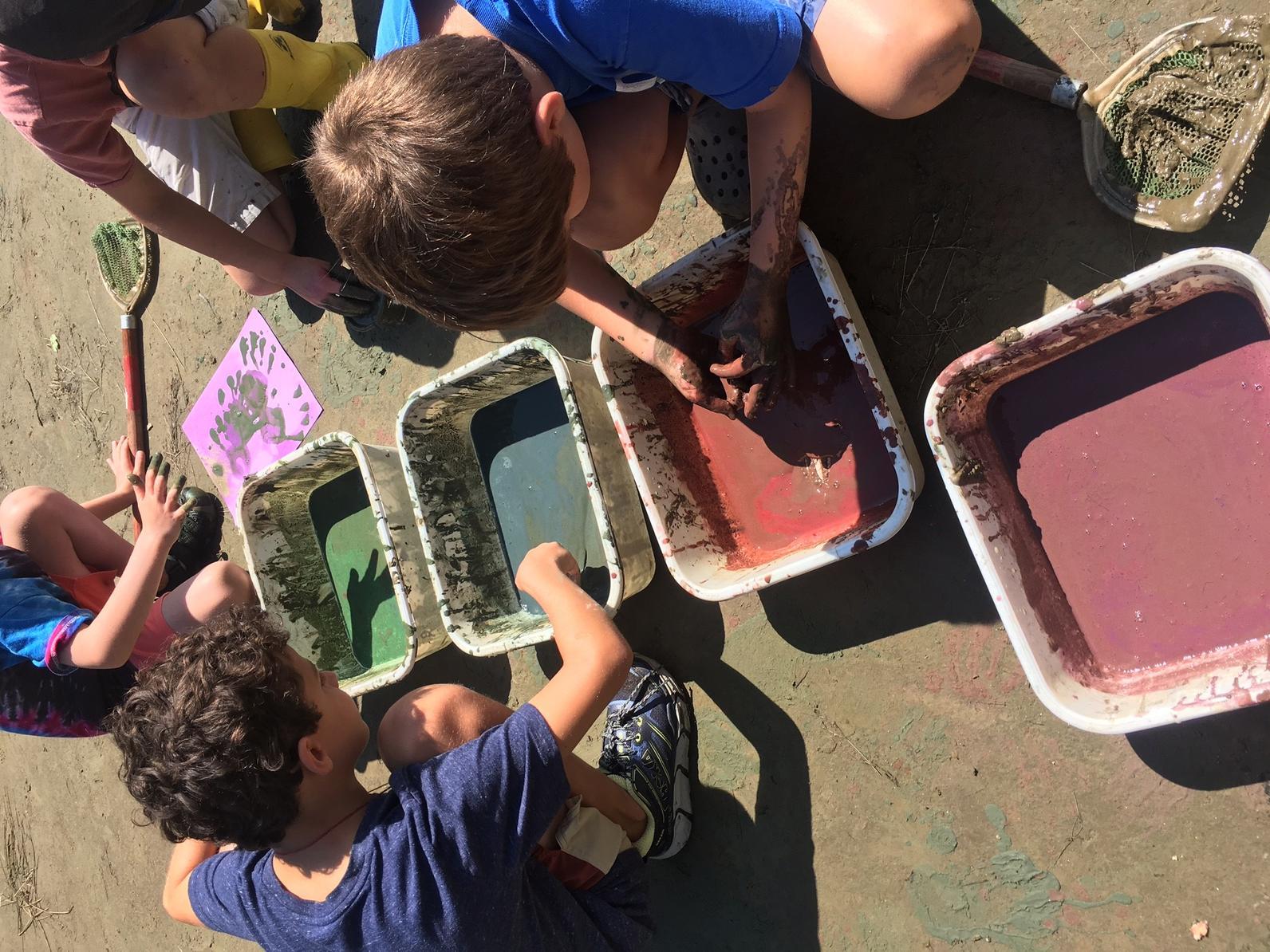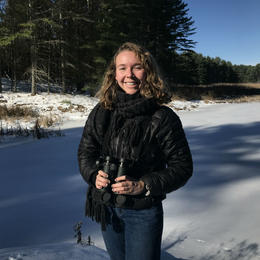Every Monday I usually have the pleasure of meeting up with a group of kiddos under the age of five and their adults at the Green Mountain Audubon Center. It is one of my favorite programs! So we are bringing Forest Playgroup to you all, virtually!
Even though it may feel like the world is on hold, natural cycles are still occuring and spring is here! Spring means, among many things, that we are officially entering mud season. I LOVE mud. Mud is a platform to talk to your students about geological history, animal habitat or tracks, and art! I am going to walk you through a few of my favorite activities to do with students using mud. These activities will work best in an area that is muddy - even better if you can be near a pond of river. Feel free to come use the Beaver Pond at the Audubon Center if you are able!
Make your own mud kitchen!
Grab some old bowls, spoons, cups, pans and any other kitchen items you either don't mind getting messy or don't use anymore. These will be your mud kitchen essentials. Tell your student they are the chef of their very own mud restaurant! They will love scooping, mixing and making fake delicacies for you. Encourage your student's imagination beyond mud pies by placing some orders. Are you in the mood for a mud smoothie, taco or spaghetti and meatballs? Gather some natural materials like sticks, leaves and pine needles for ingredients or garnish.

Mud Mystery Tracks!
A simple activity would be to go on a walk and look for tracks in the mud. Just like snow, mud holds enough detail from animal tracks for indentification. You can do this activity today or any day that you're on a walk in the coming weeks! When talking to your student about tracks it's important to not only look at the print itself, but also the pattern and place.
Place means that we are aware of the habitat type we are in and who would likely leave a track here. For example, if you thought you found a beaver track on the top of Camel's Hump you could easily rule the animal out by asking yourself if a beaver would like to live on a mountain top and if you are near any ponds or saw other evidence of beavers like dams, lodges or chews.
The pattern can help us identify prints because different animals have different gaits (strides) and, therefore, how they leave prints varies. For example, deer, fox and coyotes are lumped in a pattern group called walkers. Walkers intentionally place down their hind feet in the same spot their front foot was to conserve energy so their prints end up making a very straight pattern (see below). Other print patterns include waddlers (i.e. bears, ducks), hoppers (i.e. squirrels, rabbits) and bounders (fishers, otters, minks).

Attached at the bottom of this article you will find our tracking identification sheets. These will help you identify the pattern, print, place and who made the tracks!
Mud painting!
For this activity you will need: mud, washable paint, paint brushes or fingers, and paint containers (yogurt cups, bowls, tupperware, etc.) A crafting smock or rainsuit isn't a bad idea, unless you don't mind muddy clothes!
Mud painting is an Audubon favorite! It's a fun and easy way to use the natural elements and creativity to make something special! Head out to a comfortable spot outside where you are easily scoop some mud. First, you need to prep your paints. Mix some mud, water and your color of choice in your container. Do this for as many colors as you would like to use. Grab your paper, paintbrushes and start painting! Experiment with mixing colors, adding more or less mudd to your ratio and using fingers instead of brushes. What will you create?

Check back next Monday for another virtual playgroup filled with more fun crafts and activities!
Tracking worksheet:





